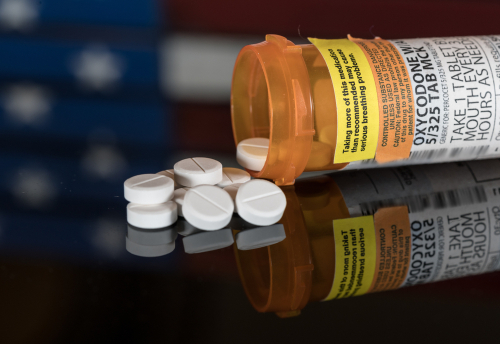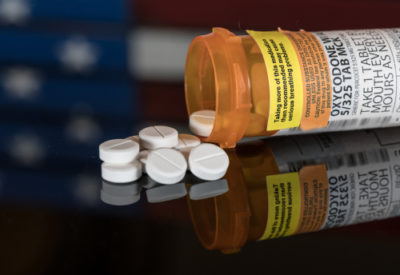What Is Oxycodone Used For?
As a result of the opioid epidemic that’s swept America, causing untold suffering, overdose deaths, and addiction, greater scrutiny of prescription narcotics is taking center stage. An estimated 47,000 people died from opiate overdose in 2017, according to government figures. That’s 67 percent of all the drug overdoses that year. Furthermore, according to the 2017 National Survey on Drug Use and Health, an estimated 2.51 million people have an opioid use disorder, which is an addiction to a narcotic opiate like oxycodone.
WHAT IS OXYCODONE?
Oxycodone is the generic name for a powerful prescription opiate (narcotic) painkiller, approved by the Food and Drug Administration in 1976. Due to oxycodone’s potential for abuse, it is a Schedule II drug under the Controlled Substances Act. Oxycodone brand names include Oxycontin, Oxecta, Oxyfast, Percodan, Endodan, Percodan-Demi Roxicodone, Xtampza ER, Xartemis XR.
Oxycodone is available in tablet, liquid and capsule forms, immediate-release tablets, extended-release tablets, immediate-release capsules, extended-release capsules, and solution. Combined with acetaminophen, oxycodone is available as Oxycet, Percocet, Roxicet, Xartemis XR, and more. Oxycodone combined with aspirin is sold as Percodan. Oxycodone is also available combined with ibuprofen.
Led by the White House, the National Institute on Drug Abuse (NIDA), National Institutes of Health (NIH), Food and Drug Administration (FDA), and a myriad of other governmental agencies, pharmaceutical companies, treatment centers and more, have placed a high priority on finding other alternative methods for managing pain without opiates.
WHY DOES SOMEONE TAKE OXYCODONE?
What is oxycodone used for? When someone is in moderate to severe pain, they want relief. Their first move is to find a remedy that will alleviate the pain, make it less intense, allow healing to continue without the stress that accompanies pain. Typically, a doctor will prescribe oxycodone for managing short-term pain that’s associated with surgery, dental procedures, or injury.
Those suffering from chronic pain, like from a migraine or cancer, may be prescribed oxycodone as well. This opioid medication can also be prescribed for those in the end-of-life stage for whom other medications do not work and who require round-the-clock pain management.
The opiate is also sometimes prescribed for the treatment of insomnia and coughing.
Oxycodone is also inappropriately used (abused) for the purposes of achieving euphoria, getting high. Oxycodone users, even when they start off taking the prescription medication for legitimate medical reasons, may develop tolerance, dependence, and addiction, as oxycodone is a highly addictive narcotic drug.
HOW DOES OXYCODONE WORK?
A strong narcotic analgesic, oxycodone is similar to morphine, hydrocodone, and codeine. Exactly how oxycodone works is not precisely known, yet researchers say it may involve stimulating the brain’s opiate receptors. While oxycodone does not get rid of the feeling of pain, it does lessen the discomfort of pain by increasing tolerance to it. Briefly, oxycodone changes how the brain perceives pain and, in so doing, provides a measure of relief from pain.
In addition to increasing pain tolerance, oxycodone causes respiratory depression (slow and ineffective breathing) and sedation (a state of calm or sleep).
WHAT ARE THE SIDE EFFECTS OF OXYCODONE?
Because oxycodone suppresses the respiratory system, this drug’s side effects can result in dangerously slowed breathing, even to the point that it completely stops. According to Medline Plus, the first 24 to 72 hours of treatment, and at any time when the prescribed dose is increased, is when the risk of serious or life-threatening breathing problems is greatest for the oxycodone user. At the point that breathing stops completely, without immediate administration of naloxone (Narcan) opiate reversal medication, the oxycodone user in the midst of an overdose may die.
Other more common side effects of oxycodone use include drowsiness, nausea, and vomiting. Serious adverse side effects that can occur are due to the drug’s effect on the body’s central nervous system. These include breathing problems, confusion, fainting, headache, lightheadedness, mood changes, pinpoint pupils, and weakness. Older adults may be particularly susceptible to certain oxycodone side effects, including confusion, dizziness, drowsiness, and slow or shallow breathing.
Due to potential harm to the unborn baby, pregnant women should not take oxycodone unless the doctor advises that it is clearly needed. Nursing mothers are also advised to talk with their doctor before breastfeeding, because the drug passes into breast milk and may produce negative side effects in the nursing infant, such as breathing difficulty, trouble feeding, and unusual sleepiness.
WITHDRAWAL FROM OXYCODONE
When discontinuing oxycodone use, withdrawal symptoms occur. The number, type, intensity, frequency, and duration of withdrawal symptoms vary. According to Healthline, symptoms of oxycodone withdrawal can include:
- Anxiousness
- Backache
- Chills
- Diarrhea
- Dilated pupils
- Increased blood pressure
- Irritability
- Muscle aches
- Nausea
- Rapid breathing
- Rapid heart rate
- Restlessness
- Runny nose
- Sleep problems
- Stomach cramps
- Sweating
- Teary eyes
- Yawning
HOW EFFECTIVE IS OXYCODONE?
Just how effective is oxycodone? A study published in Pain Physician found that oral oxycodone “appears” to offer safe and effective postoperative pain relief, and that it is a “well-accepted and reasonable alternative to standard intravenous opioid analgesics.”
A review in Cochrane Database of Systematic Reviews to assess whether oxycodone is associated with better pain relief and tolerability than other painkiller options for adults who have cancer pain found that oxycodone provides similar levels of pain relief and overall adverse events to other strong opiates, including morphine.
A rat study published in the Journal of Pain Research of oxycodone’s ability to inhibit the inflammatory response in lipopolysaccharide-induced primary microglia found that the drug, at “relatively high clinically relevant concentration,” is effective. Researchers noted that the detailed mechanism needs future investigation.
HOW IS OXYCODONE MISUSED?
According to the National Institute on Drug Abuse (NIDA) opiate abuse of prescription oxycodone occurs when the user engages in the following:
- Taking the medication in ways other than the doctor instructs, such as taking more than the regularly prescribed dose or taking it more often than prescribed
- Obtaining and using oxycodone from someone else, such as a friend or family member, even though the user may want/need the medication for a legitimate medical condition
- Mixing oxycodone with alcohol and/or other drugs, including other opiates, illicit or prescription, benzodiazepines and more
- Using oxycodone for the intent of getting high
In addition to taking a higher dose and/or taking it more often than prescribed, oxycodone is also misused by chewing the medication, or crushing it and snorting or injecting the drug to achieve the desired effects (getting high) faster.
Taking these pain relievers in combination with other depressants, such as alcohol or sleep medications, or street drugs, increases the risk of a potentially fatal overdose.
Measures to Curb Opiate Overdoses
The FDA just approved the first generic naloxone nasal spray to treat opiate overdoses, a medication manufactured by Teva Pharmaceuticals. In addition, the governmental agency is working to help facilitate an over-the-counter naloxone product. Another high priority item on the FDA’s list is looking into whether naloxone should be co-prescribed with all or some opiate prescriptions to reduce overdose death risk.
TREATMENT FOR OPIATE USE DISORDER
While the path from using opiates, such as oxycodone, to tolerance, dependence, and addiction varies and there is no precisely known timetable for how long it takes to get addicted to opiates, once addiction sets in, only formal treatment can help halt the ruinous slide and jumpstart recovery. Three FDA-approved medications are available to treat opiate addiction, including methadone, buprenorphine, and naltrexone. Methadone requires daily trips to a clinic for the medication. Buprenorphine (Suboxone) can be prescribed by an authorized doctor, is taken daily, although the FDA approved a longer-lasting version in 2017. The injectable version of naltrexone, Vivitrol, is typically administered by a medical professional.
An article in Newsday reports that the number of people in the U.S. receiving the injectable version of Vivitrol more than tripled over the past four years. In 2014, some 36,600 people received the medication that stops opiate cravings, and that number climbed to 111,500 in 2018. Figures are provided by the manufacturer of Vivitrol, Ireland-based Alkermes. Naltrexone is gaining in popularity as an alternative to methadone, a medication approved to treat opiate addiction in 1972.
Treatment for opiate addiction involves detox prior to formal treatment. Medication-assisted treatment (MAT) makes use of FDA-approved medications to help ease the symptoms of opiate withdrawal and reduce cravings. Research on MAT for substance use disorders shows that people who use MAT overcome opiate addiction and are more likely to stay clean than those who do not receive MAT.
If you or someone you care about has become addicted to oxycodone or another opiate painkiller, you can help them by finding a licensed and certified drug rehab center. Recovery from opiate addiction begins with the decision to seek treatment, starting with opiate detox and followed up with treatment. It requires commitment, a great deal of support from loved ones and family members and self-help or support groups like Narcotics Anonymous, and a willingness to change maladaptive lifestyle habits. Key to recovery is learning about the disease of addiction, developing effective coping strategies, preparing a relapse prevention plan, and continuing to take advantage of counseling and appropriate therapies that may be available.
Whatever you started using oxycodone for, it is possible to reclaim and rebuild your life from the shambles of your physical dependence and addiction.
For more information about painkiller addiction and recovery, call our rehab center today.
Sources:
- Anesthesiology and Pain Medicine. “Use of Oxycodone in Pain Management.” Retrieved from https://www.ncbi.nlm.nih.gov/pmc/articles/PMC4018705/
- Cochrane Database for Systematic Reviews. “Oxycodone for cancer-related pain.” Retrieved from https://www.ncbi.nlm.nih.gov/pubmed/28829910
- Drug Enforcement Administration. “Drug Scheduling.” Retrieved from https://www.dea.gov/drug-scheduling
- Drug Enforcement Administration. “Oxycodone.” Retrieved from https://www.deadiversion.usdoj.gov/drug_chem_info/oxycodone/oxycodone.pdf
- Drugs.com. “Oxycodone.” Retrieved from https://www.drugs.com/oxycodone.html
- Food and Drug Administration. “FDA approves first generic naloxone nasal spray to treat opioid overdose.” Retrieved from https://www.fda.gov/NewsEvents/Newsroom/PressAnnouncements/ucm636333.htm
- Healthline. “Oxycodone, Oral Tablet.” Retrieved from https://www.healthline.com/health/oxycodone-oral-tablet
- Journal of Pain Research. “Oxycodone ameliorates the inflammatory response induced by lipopolysaccharide in primary microglia.” Retrieved from https://www.ncbi.nlm.nih.gov/pubmed/29950892
- Mayo Clinic. “Oxycodone (Oral Route).” “Proper Use.” Retrieved from https://www.mayoclinic.org/drugs-supplements/oxycodone-oral-route/proper-use/drg-20074193
- Medline Plus. “Oxycodone.” Retrieved from https://medlineplus.gov/druginfo/meds/a682132.html
- National Institute on Drug Abuse. “Opioid Facts for Teens.” Retrieved from https://www.drugabuse.gov/publications/opioid-facts-teens/faqs-about-opioids
- Newsday. “More opioid addicts turning to Vivitrol to come clean, rebuild their lives.” Retrieved from https://www.newsday.com/news/health/vivitrol-anti-opioid-medication-1.29719752
- Pain Physician. “Oral Oxycodone for Acute Postoperative Pain: A Review of Clinical Trials.” Retrieved from https://www.ncbi.nlm.nih.gov/pubmed/28226340
- Substance Abuse and Mental Health Services Administration. “2017 National Survey on Drug Use and Health.” Retrieved from https://www.samhsa.gov/data/report/2017-nsduh-annual-national-report


